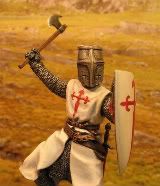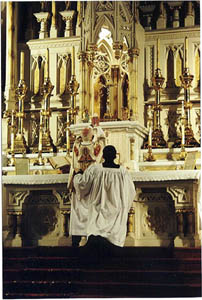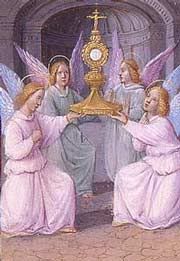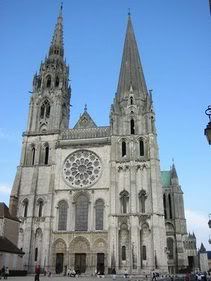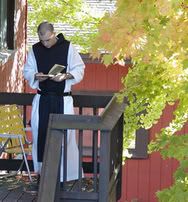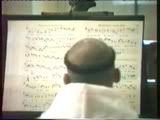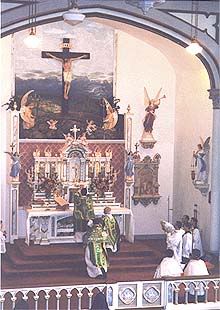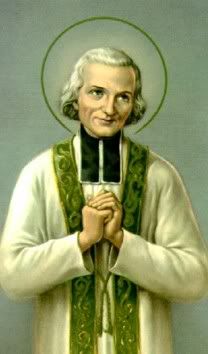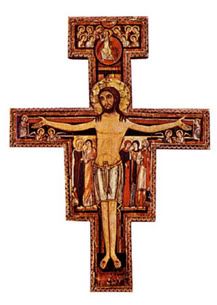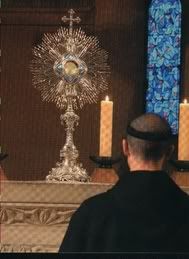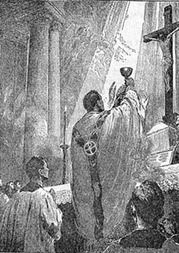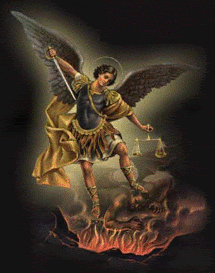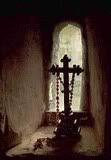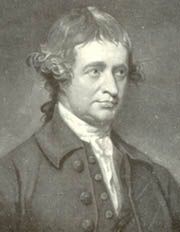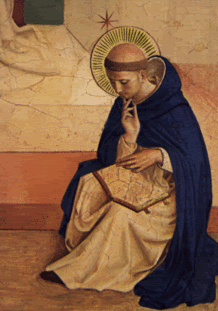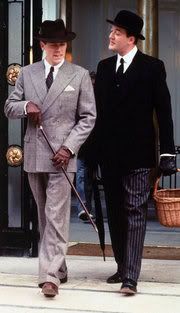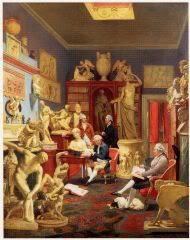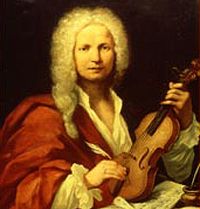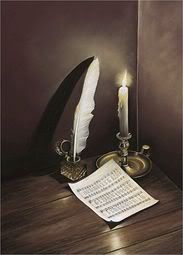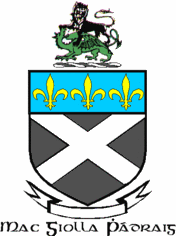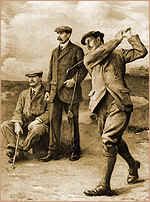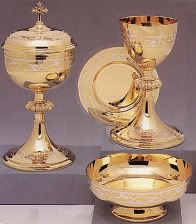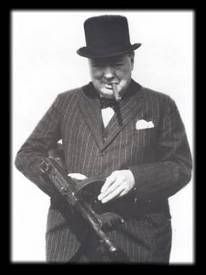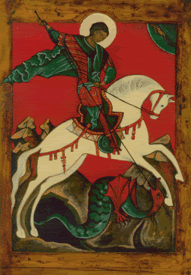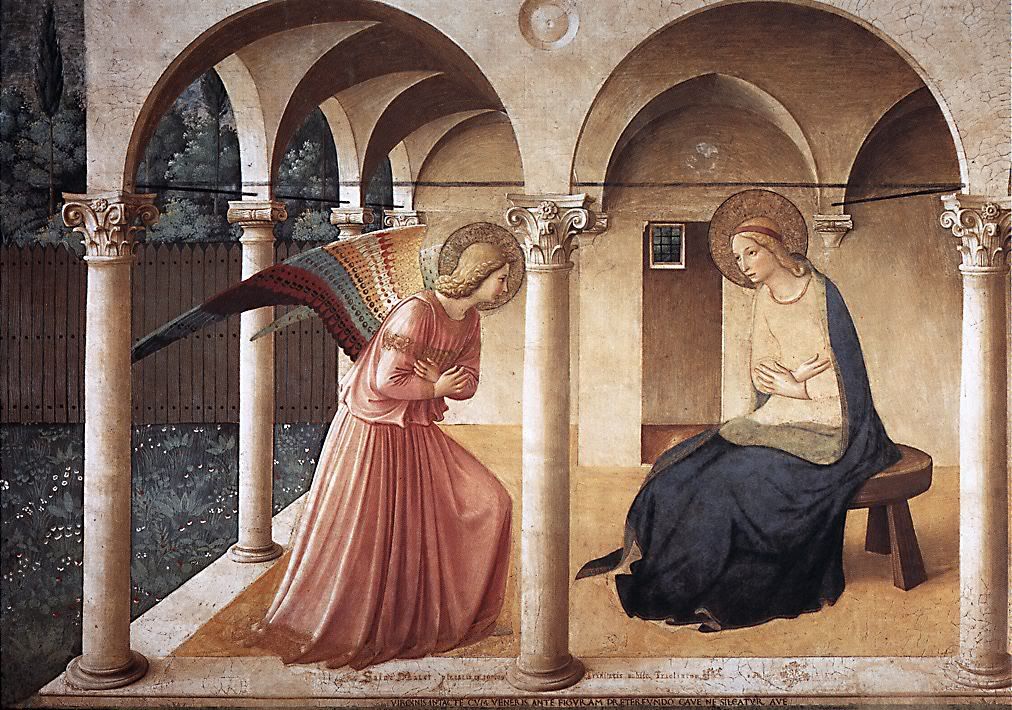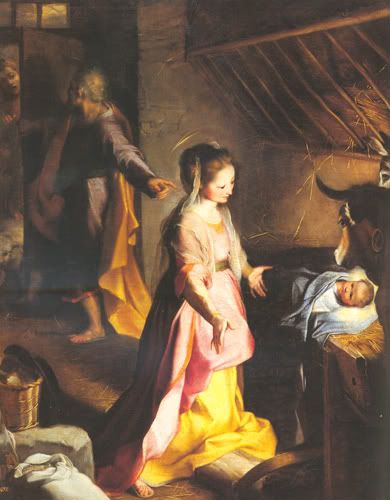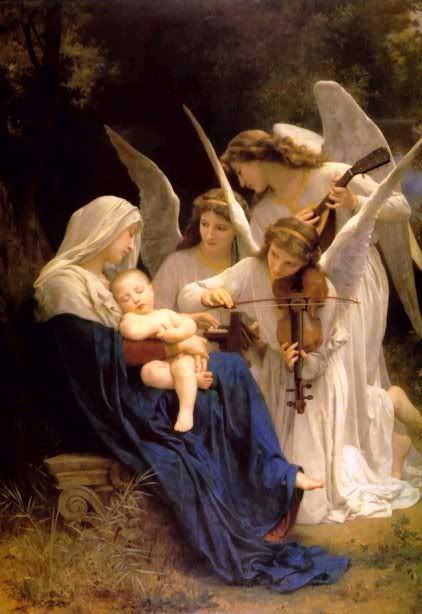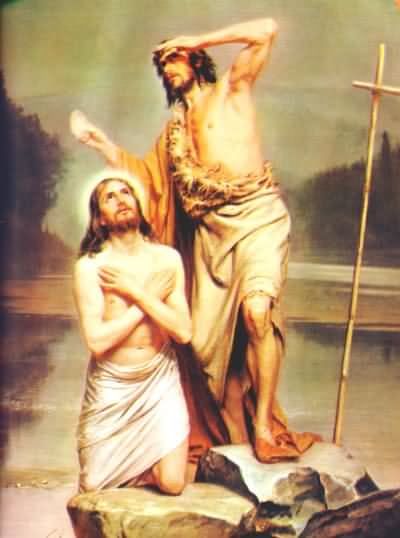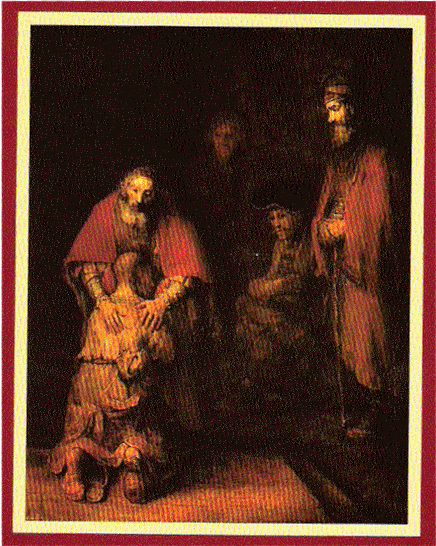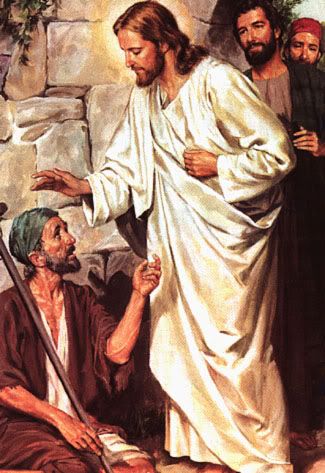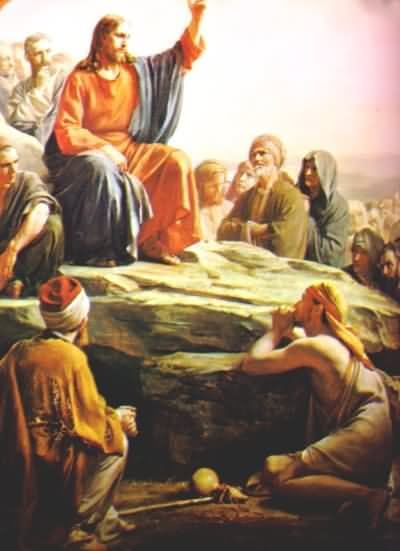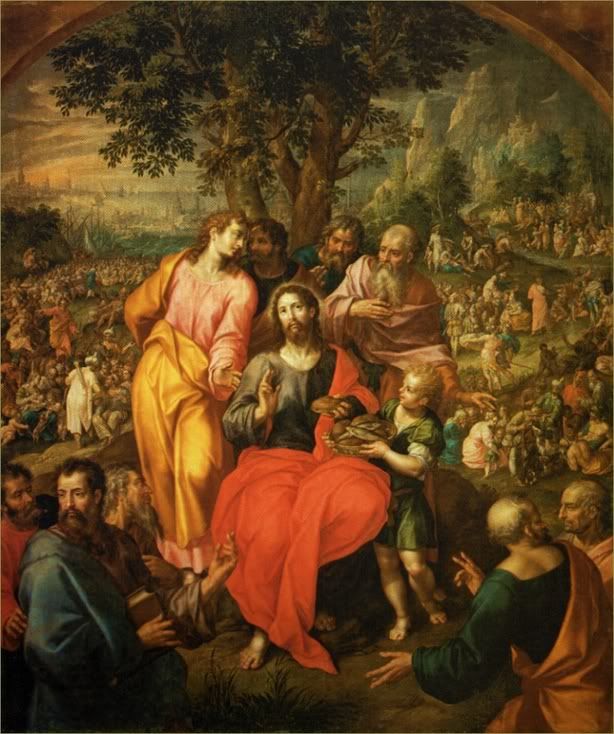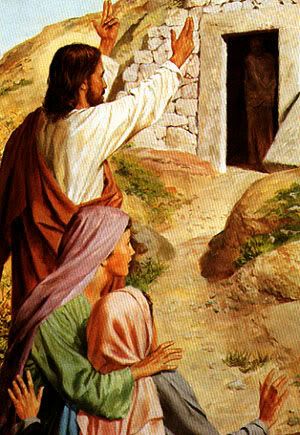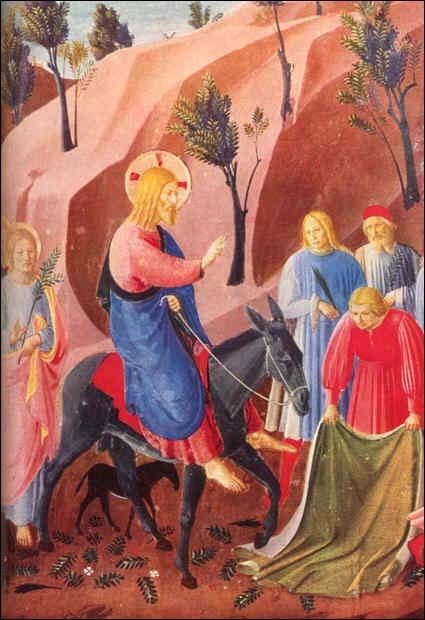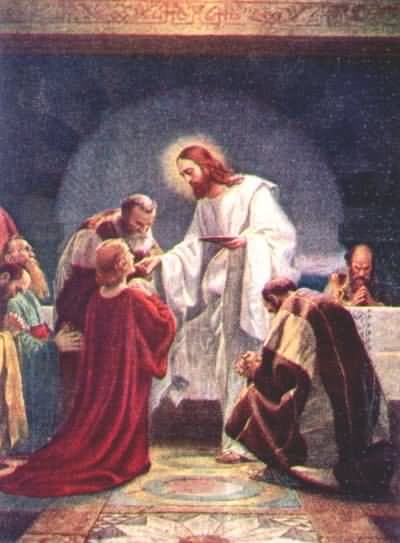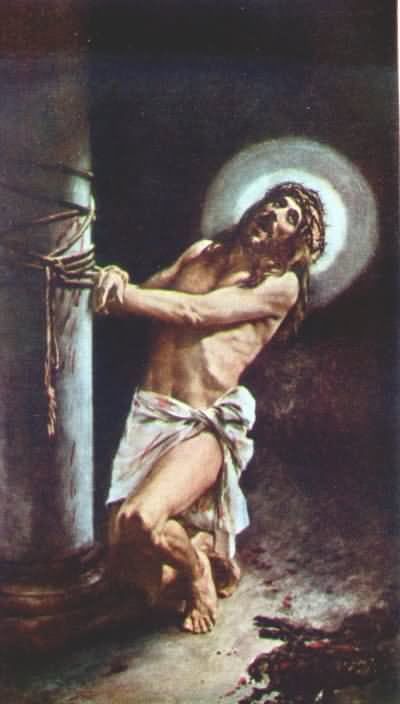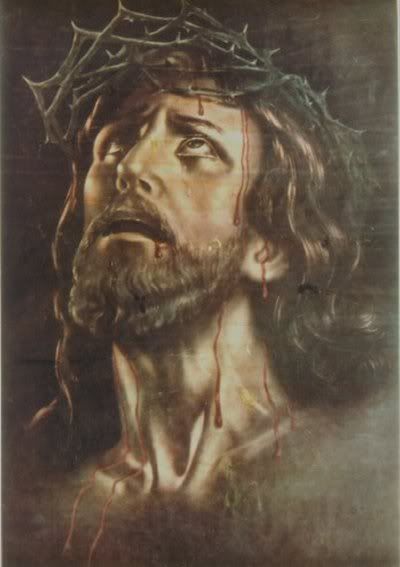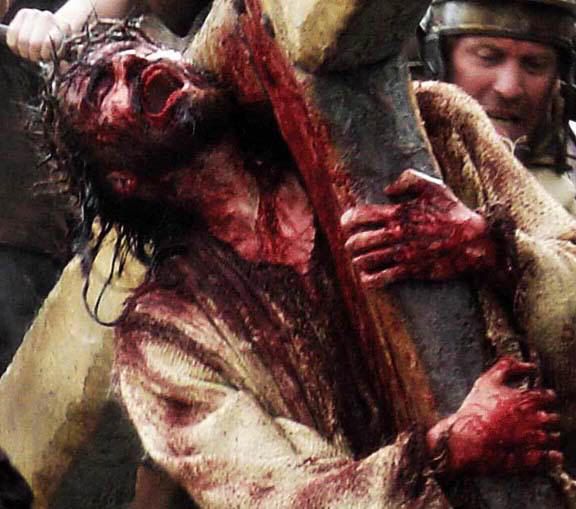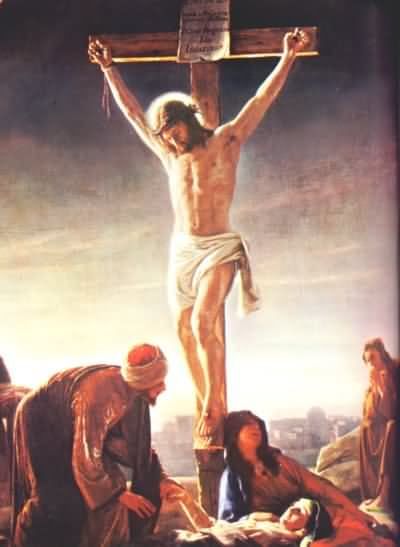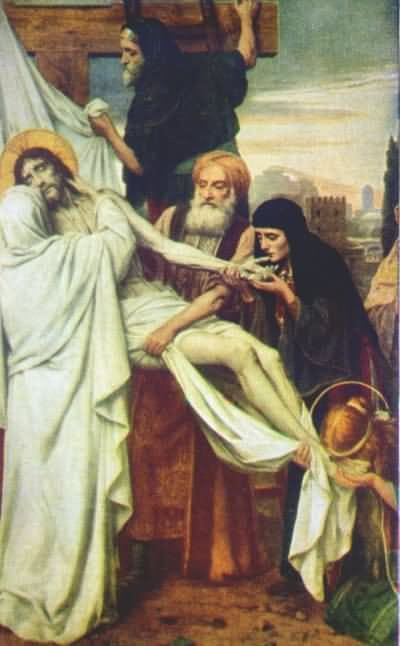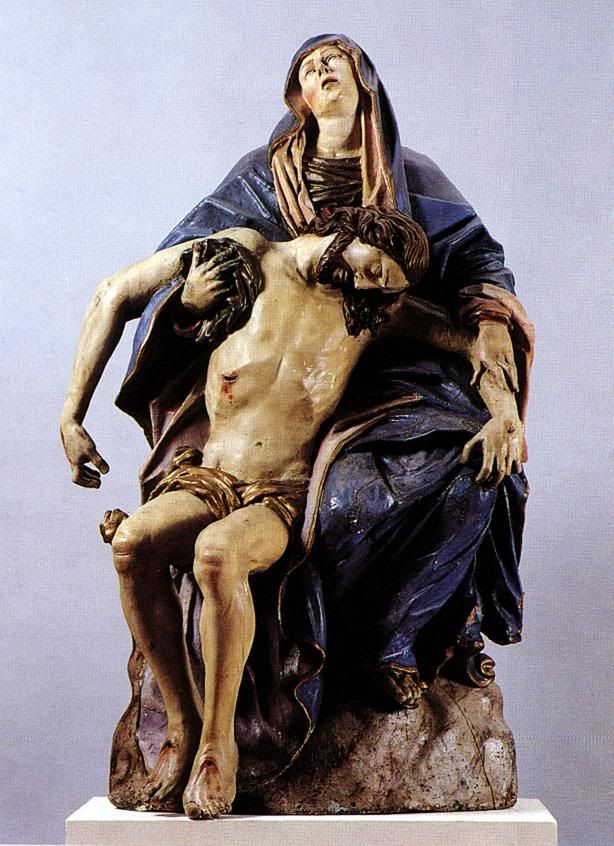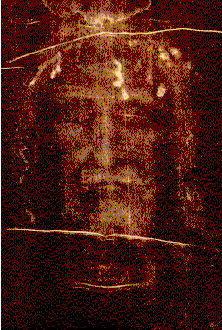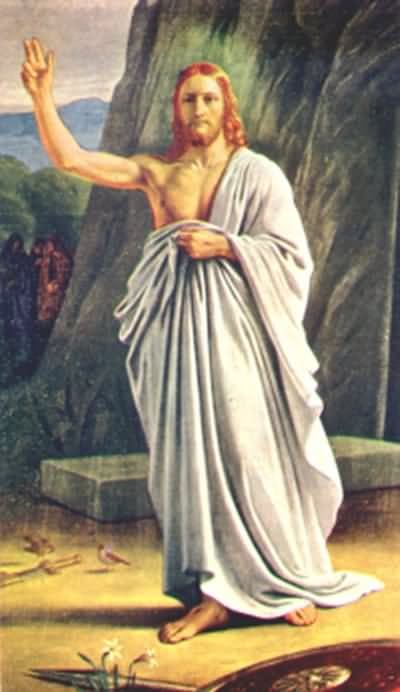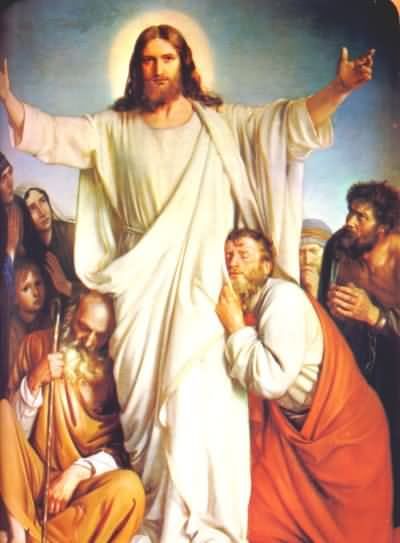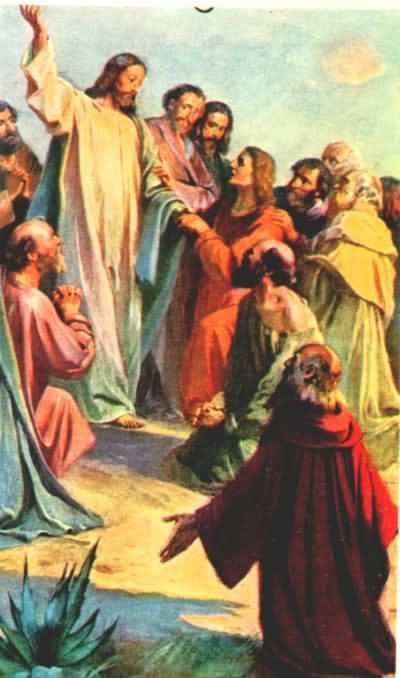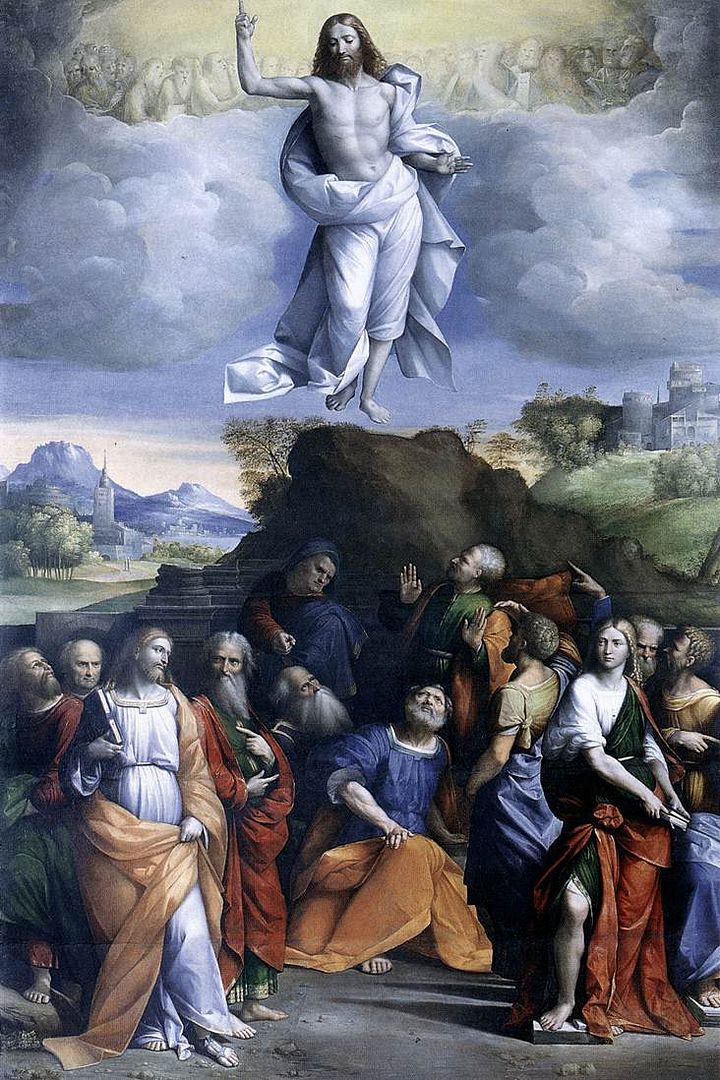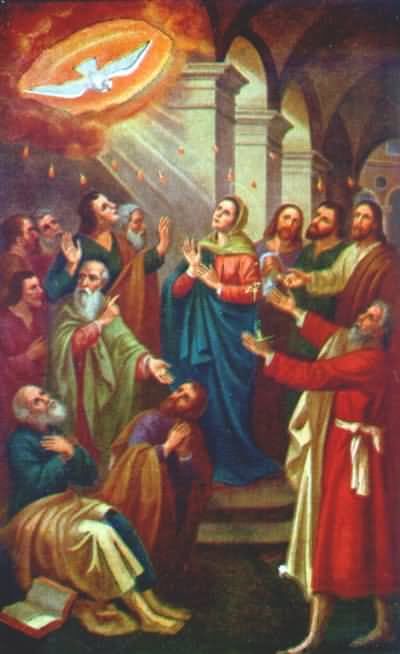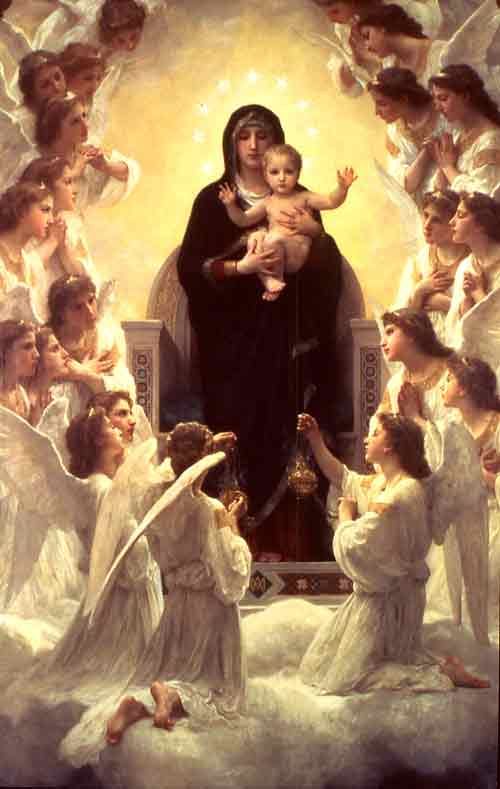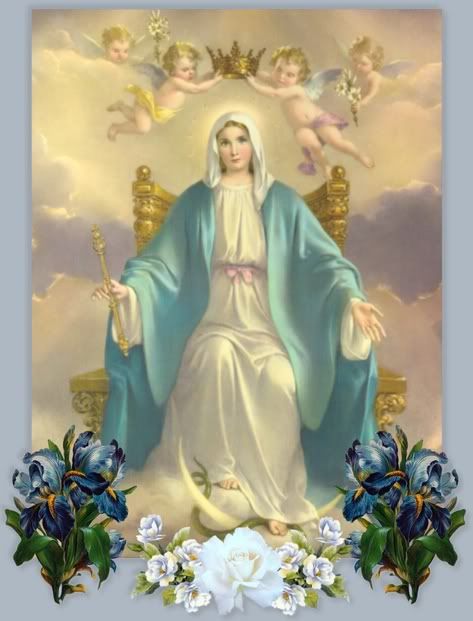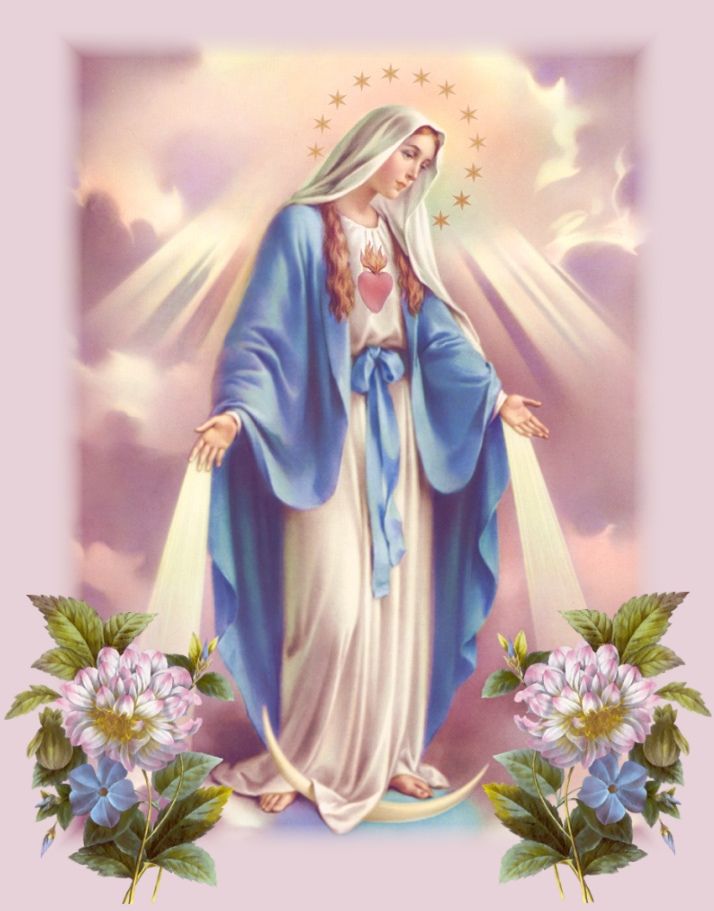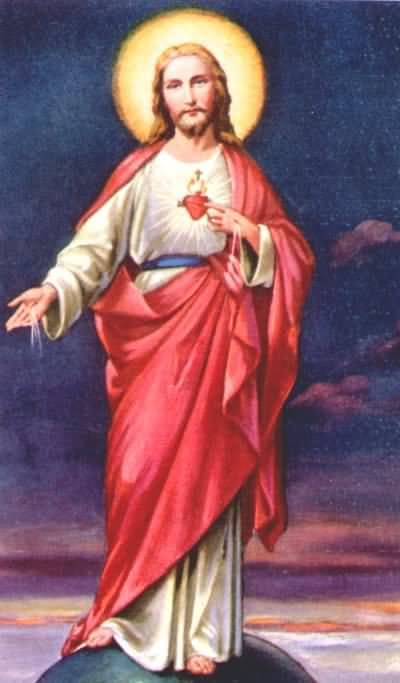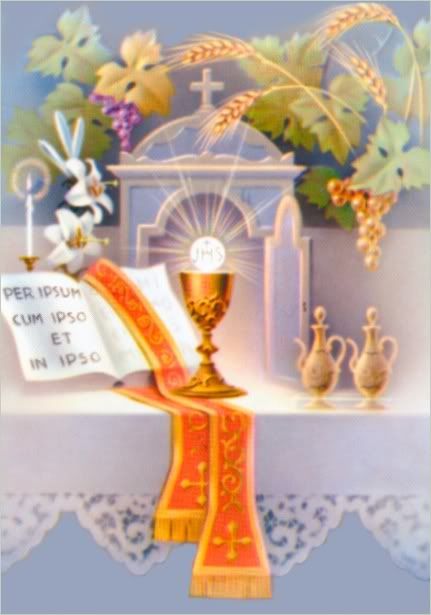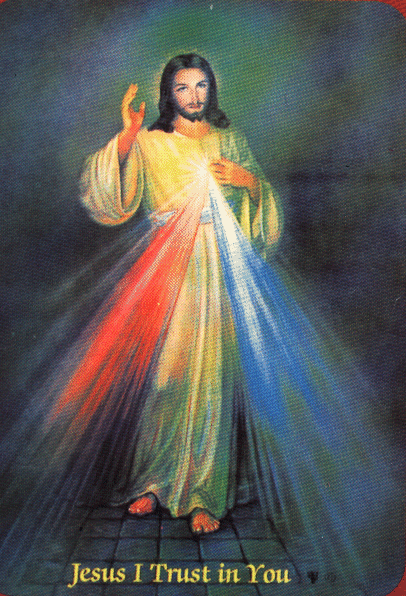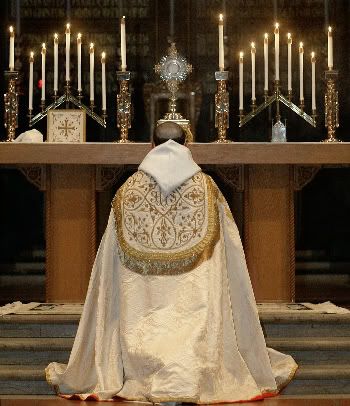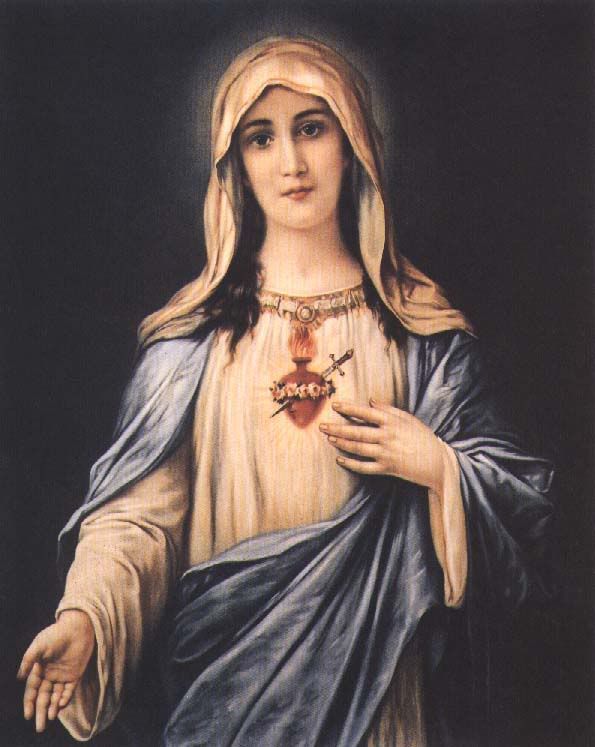Saturday, July 23, 2005
Saint Bridget of Sweden

Brief biography of Saint Bridget
Pray the Fifteen "O" Prayers of Saint Bridget of Sweden
The Devotion Of the Seven Dolors of the Blessed Virgin Mary was also the inspiration of Saint Bridget.
Today's Catholic Cultural Heritage Image
Interview With Roger Scruton
From The Independent:
I think I might have to start reading his books. He is good, like a ninja (Donegal Express joke).
Found via John J. Miller in The Corner.
After a drink, we move through to begin lunch, components of which have been produced on the Scruton farm. "That's Singer," declares Roger, pointing at a plate of leftover sausages. Singer the pig, mischievously named after Peter Singer, the philosopher and animal-rights theorist, has been "ensausaged" personally by his former owner. Roger beams as another lunch guest, his publisher Robin Baird-Smith, asks if he can take the final morsel. Singer, it must be said, does taste pretty good.
I think I might have to start reading his books. He is good, like a ninja (Donegal Express joke).
Found via John J. Miller in The Corner.
Waste!!!
Last July, in an expensive frenzy of effort to make the city look really peachy keen for the Democrat National Convention, additional trees were planted along Boylston Street near the Prudential Center, undoubtably at huge cost to the taxpayer. Just so that the busy pates of the visiting socialists might not bake in the July sun.
Today, walking down there, I noticed that those self-same trees, planted just last year, have all been cut down to facilitate some construction project going on next to the Pru.
Plant a tree, then cut it down. That is the way govermnents (and large corporations)work.
Today, walking down there, I noticed that those self-same trees, planted just last year, have all been cut down to facilitate some construction project going on next to the Pru.
Plant a tree, then cut it down. That is the way govermnents (and large corporations)work.
"Offer It Up"
I heard those words time and again as a child, from my mother and grandmother, but there was never any explanation of what, on earth, they were talking about.
Well, Ancient and Future Catholic Musings presents a good short discussion of the value of offering up our sufferings and tribulations.
Well, Ancient and Future Catholic Musings presents a good short discussion of the value of offering up our sufferings and tribulations.
Friday, July 22, 2005
I Hate Glitches
The computer I was working on this morning had an internet connection problem at about the same time Blogger had a bit of cyber indigestion. The result was that Recta Ratio was reduced down to one template image for a couple of hours. Fortunately, I back up my template (though not often enough). That means I lost all new links added in the last 3 weeks (and there were a number of them). I'll see what I can do to restore them, but be patient. I'm going to have to do it from memory.
Michael Reagan On The Left's Anti-Catholicism
Leftists Are All Looking Uncomfortably At A Rise of Catholic Conservatism
There is precious little evidence that things in Europe are getting any better: churches turned into boutiques and movie theaters, sacramentals up for sale, gay "marriage" being adopted by "Catholic" countries. But here and there, something gives rise to some hope.
Not the most tactful or pleasant way of making a point, and certainly one that ought to have been made, again and again, 30 and 40 years ago. But it is something, anyway.
Not the most tactful or pleasant way of making a point, and certainly one that ought to have been made, again and again, 30 and 40 years ago. But it is something, anyway.
A Long-Sought Answer
I have always wondered why the Wednesdays, Fridays, and Saturdays of the four annual embertides are penitential, but they take a one-day break for Thursday.
The Golden Legend, posted by Catholic forum, and which I found via a link at The Shrine of the Holy Whapping, provides the answer:
I had guessed that it was more or less on those grounds, but now I know.
The Golden Legend, posted by Catholic forum, and which I found via a link at The Shrine of the Holy Whapping, provides the answer:
The eighth reason is of Master William of Auxerre. We fast, saith he, in these four times of the year to the end that we make amends for all that we have failed in all these four times, and they be done in three days each time, to the end that we satisfy in one day that which we have failed in a month; and that which is the fourth day, that is Wednesday, is the day in which our Lord was betrayed of Judas; and the Friday because our Lord was crucified; and the Saturday because he lay in the sepulchre, and the apostles were sore of heart and in great sorrow.
I had guessed that it was more or less on those grounds, but now I know.
My Thoughts, Almost Verbatim

Matthew at The Shrine of the Holy Whapping beat me to the punch on detailed architectural criticism of the new Ave Maria chapel design. And since he said just about everything that was percolating around in my head, there is no need for me to repeat, except to say, go read what the young fellow says. He makes sense.
Lots of Folks Are Running With This Photo of the Holy Father

But I have to give an awful lot of credit to Der Tommisar of the lively Donegal Express who came up with the line, "Why is the Holy Father dressed like an extra from The Empire Strikes Back?"
Newly Noticed Blog
The American Inquisition.
Good title.
Good banner.
But all wrong regarding Judge Roberts. Pssst. He's one of ours. He is no David Souter. His wife is in a pro-life organization. His will be a solid additional vote in the Rehnquist/Scalia/Thomas bloc. Trust me on this one. I went to law school. I know the conservative lawyer code-words. He's one of us. His judicial philosophy requires support for our position given the right case before the Court.
If the only acceptable Supreme Court appointee is someone carrying a sign in front of an abortuary on a regular basis, there will never be another conservative justice confirmed to the Court, unless somehow there are ever 61 rock-solid, team-playing conservative Republican senators in office at the same time.
Politics is the art of the possible.
Don't make the perfect the enemy of the good.
The real fight will happen when Justice Stevens retires or dies, if that happens before President Bush leaves office. The Rehnquist replacement should not be as controversial, as that is just replacing a conservative with, presumably, a conservative. But Stevens is now the key to getting Roe overturned (assuming Judge Roberts is confirmed). A good solid conservative, another Roberts, replacing Stevens means the end of Roe v. Wade, and a lot more nonsense besides. It would probably also hasten the departure of Justice Ginsburg, 72 and in poor health, and faced with permanent minority status. Don't overlook a bandwagon effect on Justices Kennedy and Souter. Justices like to be on the winning side. They don't like to be permanently on the losing side.
Good title.
Good banner.
But all wrong regarding Judge Roberts. Pssst. He's one of ours. He is no David Souter. His wife is in a pro-life organization. His will be a solid additional vote in the Rehnquist/Scalia/Thomas bloc. Trust me on this one. I went to law school. I know the conservative lawyer code-words. He's one of us. His judicial philosophy requires support for our position given the right case before the Court.
If the only acceptable Supreme Court appointee is someone carrying a sign in front of an abortuary on a regular basis, there will never be another conservative justice confirmed to the Court, unless somehow there are ever 61 rock-solid, team-playing conservative Republican senators in office at the same time.
Politics is the art of the possible.
Don't make the perfect the enemy of the good.
The real fight will happen when Justice Stevens retires or dies, if that happens before President Bush leaves office. The Rehnquist replacement should not be as controversial, as that is just replacing a conservative with, presumably, a conservative. But Stevens is now the key to getting Roe overturned (assuming Judge Roberts is confirmed). A good solid conservative, another Roberts, replacing Stevens means the end of Roe v. Wade, and a lot more nonsense besides. It would probably also hasten the departure of Justice Ginsburg, 72 and in poor health, and faced with permanent minority status. Don't overlook a bandwagon effect on Justices Kennedy and Souter. Justices like to be on the winning side. They don't like to be permanently on the losing side.
Saint Mary Magdalen
July 22nd is the feast of this holy penitent woman and close follower of Our Lord.
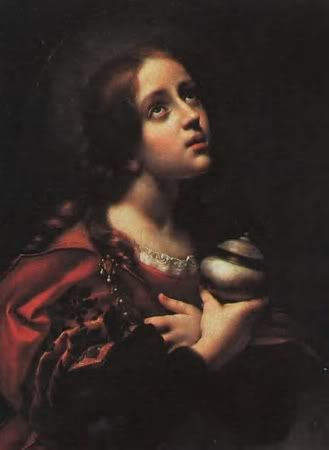
Here is something I would have changed in the 1962 Missal. This is the prayer for today's feast:
Obvious problem. Most biblical scholars do not believe that Mary of Magdala is the same person as Mary of Bethany, the sister of Martha and Lazarus. Changing that would have been a prudent reform of the 1962 Missal I could have supported without much hesitation.

Here is something I would have changed in the 1962 Missal. This is the prayer for today's feast:
We beseech Thee, O Lord, that we be helped by the intercession of Blessed Mary Magdalen, by whose prayers Thou raised her brother Lazarus to life, after he had been dead four days.
Who live and reign with God the Father, in the unity of the Holy Ghost, one God, world without end.
Amen.
Obvious problem. Most biblical scholars do not believe that Mary of Magdala is the same person as Mary of Bethany, the sister of Martha and Lazarus. Changing that would have been a prudent reform of the 1962 Missal I could have supported without much hesitation.
Thursday, July 21, 2005
Good Point
Today's Catholic Cultural Heritage Image
For the vigil of Saint Mary Magdalen, Donatello's Magdalen In Penance


Requiescat In Pace
James Doohan, who played Commander Montgomery Scott, engineering officer of the USS Enterprise on Star Trek died at the age 85 yesterday. Scotty was my favorite of the Star Trek cast. I fondly remember an episode when he was trying to drink an alien under the table, and a new brew was brought forth.
"What is that?"
"It's, uh, it's green!"

James Doohan was an officer in a Canadian artillery unit and landed at Juno Beach on D-Day. He is survived by his wife of 31 years. His ashes will be shot into space. Requiescat in pace.
"What is that?"
"It's, uh, it's green!"

James Doohan was an officer in a Canadian artillery unit and landed at Juno Beach on D-Day. He is survived by his wife of 31 years. His ashes will be shot into space. Requiescat in pace.
Possible Episcopal Perjury
The attorney for the plaintiff is referring the matter to prosecutors, who may convene a grand jury to consider whether Bishop Pilla committed perjury.
Call it getting rid of "filth in the Church, Part XCII."
Call it getting rid of "filth in the Church, Part XCII."
The Barbarians Are At It Again
Four more bombs hit the London transport system, two weeks after bombs killed over 50 people and injured over 400. Casualties and damage this time are said to be light.

This is a war to the death with radical Moslems. It is us or them. It sure as hell isn't going to be us.

This is a war to the death with radical Moslems. It is us or them. It sure as hell isn't going to be us.
Wednesday, July 20, 2005
Reflections On the Resurgence of Devotionalism
Father Jim Tucker has a very good review over at Dappled Things.
This is something I have a bit to say on. As any regular reader will note, I'm POD, as the saying goes. This is new for me.
Let me explain why devotions are a new thing to a cradle Catholic who spent 19 years in Catholic school.
My 19 years of Catholic education included saying the Rosary once in a while in May in grade school, and Stations on Lenten Fridays in grade school. I should point out that the Stations we used (this was the 1970s, folks) were very "hip." No cumbersome formats from Saint Alphonsus Liguori. No pictures of the activity of the stations themselves. Instead there were pictures from the headlines: badly burned Vietnamese children, school bus accident victims for Jesus being taken down from the Cross, that sort of thing.
We went to Mass as a school or a class 2-3 times per year, despite the school being one house away from the church on a quiet side street.
Of our 8 years, we had a Franciscan nun for religion class 4 years. That is actually not bad. Now we would not have any nuns, because they are all in retirement homes, or getting themselves "ordained" as priests. And our Franciscan nuns back in the early-mid 1970s still wore habits!
Our religion class was always the first thing cancelled when we needed time to rehearse for a school show (we did 2-3 school shows a year, and they needed a lot of rehersals). Our curriculum was the "butterfly curriculum" as it appeared in the early 1970s. We read a few Bible stories, but never developed any sort of comprehensive understanding of how they fit together.
Sometimes we acted them out in skits.
Basically, it is only a slight exaggeration to say that the entire content of my religion class was that Jesus was nice, curing all sorts of beggars and sick people, and that we ought to be nice to them, too. it was all big on miracles and love, but very low on suffering and prayer. Many prayers that i consider basic, we did not learn. You can number among them the Salve Regina, the Anima Christi, and the Act of Contrition. We did learn the Pater and Ave, but not by those names.
In high school (Catholic prep school, actually) my religion classes were almost 100% content-free. We learned a little about the Catholic faith in the one semester they spared religion freshman year (9th grade). I remember that Brother Chad, CFX, God rest him, had us memorize the Seven Last Words.
Sophmore year, it was comparative religions for one semester. I learned more about Buddhism and Islam than about Catholicism.
Junior year, it was a psycho-babble class in which we studied a book called In Search of Self about someone called Dibs, if I recall correctly.
And then the senior religion requirement was a ridiculous retreat weekend, where they were honing those team-building exercises that became the staple for corporations that had extra money to blow in the 90s.
The chaplaincy was all guitar Masses and rap sessions. It was run by someone who insisted on being called "Father Tony." I never once went to Mass at St. John's in 4 years.
In college, I took no religion classes. I had one class freshman year (a two-semester modified "great books" class called The Honors Program) where the professor at the start of the year was called "Father," but by january was, in fact, just plain "Professor" (he left the Jesuits).
Later I had a Diplomatic History class taught by a professor who was still a Jesuit. He was actually an old-fashioned solid Jesuit, but retired after my senior year (along with most of my lay professors from the History Department). But his subject matter was the history of European diplomacy, not religion. He stuck to his subject matter (and we actually learned something about it in his class).
I actually learned a little bit about religion by osmosis from Doctor Samuel Miller and Doctor William Daly, who taught me early modern European history and Medieval European history respectively in several classes each. That was it for my exposure to the Faith at Boston College. I never attended any religious service while I was on campus (I was a commuter). I was an officer of a pro-life organization, but we were not that active.
The chaplaincy office at BC was run (or staffed, anyway) by notoriously left-wing former Boston City Coucilor Rosaria Salerno. The bulletin boards were all about boycotts of the CIA, and pro-Sandinista and pro-Nuclear Freeze propaganda. One would have thought that the primary objective of the Roman Catholic Church between 1982 and 1986 was the overthrowing of the Reagan Administration. Since I was, and am, a staunch Reaganite, with little liking for guitar Masses and rap sessions, I stayed away. But I would not have learned anything but a deeper appreciation of Kumbaya there, anyway.
In law school (Boston College Law School), there was only one Jesuit on the faculty. He taught Conflicts of Law, and retired after my 3L year. There was absolutely no religious content in any of my classes, and no religious atmosphere at the law school.
The fact that I kept going to Mass weekly at home throughout these years was purely happenstance. The plain fact is that I was long unsuccessfully in pursuit of a very popular girl I had been at grade school with, and she and her parents still attended our school parish (she occasionally, her parents regularly). So I would run into her there and chat a bit after Mass (if I was lucky). And that was pretty much what kept me going to Mass.
So, when I got out of law school, found the object of my constant but, utterly unrequited affections married, had my family start dying off in droves, got busy with golf and re-enactments that took up my weekends, and had a liberal pastor appointed to my parish, even my Mass attendance dropped away for years to weddings and funerals.
It was years later, as I got active in the Faith again, and being something of an antiquarian with a "High Church" disposition, that I discovered for the first time, Catholic devotions. I had never been taught word one, in 19 years in Catholic schools (and I got A's in all my grade school religion classes) about The Sacred Heart, the Immaculate Heart, the Miraculous Medal, the Brown Scapular, the Green Scapular, the Red Scapular, the Black Scapular, the Blue Scapular, the White Scapular, First Fridays, First Saturdays, meatless Fridays (except during Lent), veiling images, Black Fasts, Ember Days, Rogation Days, Jesse Trees, Advent Wreaths, the proper use of sacramentals, etc.
I knew nothing about the various apparitions of Our Lady. I had no idea what the various religious orders were all about. About the structure of the Church, I was clueless.
So, you see (and I apologize for bringing you here the long way) until about 8 years ago, when I started to watch the TV Mass daily with my mother as she was declining with dementia, I was just about like every other Catholic out there, a CINO. I knew nothing about the Faith. My keister wasn't even in the pew. I had not made a good confession since my first (and even my first was not that good).
The world of Catholic devotions had completely unexplored territory for me.
Then a series of life crises made me more pious, bit by bit. Why? I can't fully explain it. Maybe it was the influence of those old pre-Vatican II Missals my parents had held onto. I had picked them up and leafed through them (particularly the pictures) from time to time, when I had a pious fit (usually around Easter). Bit by bit, as my life got less and less complicated, and I needed God more and more, I came to first learn, and then to lean on the devotions. They put me in touch with him, and with the historic tradition of the Church as well.
Stations were the first. That plus the lives of the saints, and a building love for daily reading of the Psalms. I usually said those at home in private. Rosary came much later. Divine Mercy chaplet even later. Then, in the last 2 years, the medieval weekday hours, especially the Office of the Blessed Virgin Mary and the Office of the Dead. Plus the whole array of now-mostly forgotten devotions, like the Seven Last Words, the Five Sacred Wounds, the Psalter of Saint Jerome, the devotion to the Holy Cross, keeping Saturday as a special day for visits with the Blessed Virgin Mary (calling her that, rather than simply the Blessed Mother).
Then, on a different track, The Imitation of Christ,a chance purchase when I happened to have $7.50 in my pocket, led me to an appreciation for mystical works. The Ascent of Mount Carmel and The Dark Night of the Soul followed. They all led my to The Dolorous Passion.
Eucharistic Adoration has been the keystone. I had never been to Eucharistic Adoration until the evening of September 11, 2001. A daily holy hour, or even just a half hour visit has taught me so many new (to me) devotional forms: The Adoro Te Devote, the Tantum Ergo and the O Salutaris. Saint Alphonsus Liguori's Visits To the Blessed Sacrament led me to his The Glories of Mary. Both led me to Saint Francis de Sales' Introduction To the Devout Life.
Did any of this take away from my participation at Mass, as those people who are so down on devotional prayer claim? No. Not at all. It strengthened it and deepened it. Now I actually understand and pay attention to what is going on at the altar. Now I appreciate the form, and why it is what it is, rather than just fuming over the time spent. Now I have graduated from the simple, solid, good bachelor's degree work of the Novus Ordo Mass, to the doctoral work of the traditional Latin Mass.
So, I am a big advocate of an active devotional life in any parish. Ann Taves in The Household of Faith, a study of 19th century American Catholic devotional practices and writings which I read a couple of months back, discussed a Chicago parish run by the Jesuits that was a leader in the parish mission movement. That parish struck me as far more alive and vibrant than almost any Catholic parish today. it had a wide array of devotional organizations, and charitable oreganizations, all stemming from the one objective of being better Catholics, not just doing the mimimum to be still called a Catholic.
Divine Mercy chaplet? You bet. Rosary? Whenever I can. Stations? I go out of my way to make an hour or so every Lenten Friday for them, at a church. The Office of the Dead and prayers for the Holy Souls? Throughout Novemeber, and whenver I feel the need.
I do not necessarily subscribe to the "more the better" school for an individual. Everyone is different, and may find one devotion that appeals more than others. I am still having trouble with First Fridays and First Saturdays. But a wide array of devotional activities ought to be available in every parish, especially adoration of our Lord in the Blessed Sacrament on more than a one-day per month basis. Then our parishes would no longer be locked up tight every time there is not a Mass being said. Then maybe people would grow up with a sense of what it means to be Catholic, which is something that escaped me in my education.
I came to this struggling, but slightly better-informed state by myself, on my own, through my own reading. Not everyone can or will do that. They need the framework of organized devotions at the parish level to get them there. The Church ought to offer them the opportunity. It may solve many problems in the Church, including the feminization of the administration of the parish, and the vocations problem, and the catechsis crisis, if done properly and persevered in long enough.
Devotions are a part of our Catholic identity. We ought to learn what that identity is, and partake of it to the best of our ability.
This is something I have a bit to say on. As any regular reader will note, I'm POD, as the saying goes. This is new for me.
Let me explain why devotions are a new thing to a cradle Catholic who spent 19 years in Catholic school.
My 19 years of Catholic education included saying the Rosary once in a while in May in grade school, and Stations on Lenten Fridays in grade school. I should point out that the Stations we used (this was the 1970s, folks) were very "hip." No cumbersome formats from Saint Alphonsus Liguori. No pictures of the activity of the stations themselves. Instead there were pictures from the headlines: badly burned Vietnamese children, school bus accident victims for Jesus being taken down from the Cross, that sort of thing.
We went to Mass as a school or a class 2-3 times per year, despite the school being one house away from the church on a quiet side street.
Of our 8 years, we had a Franciscan nun for religion class 4 years. That is actually not bad. Now we would not have any nuns, because they are all in retirement homes, or getting themselves "ordained" as priests. And our Franciscan nuns back in the early-mid 1970s still wore habits!
Our religion class was always the first thing cancelled when we needed time to rehearse for a school show (we did 2-3 school shows a year, and they needed a lot of rehersals). Our curriculum was the "butterfly curriculum" as it appeared in the early 1970s. We read a few Bible stories, but never developed any sort of comprehensive understanding of how they fit together.
Sometimes we acted them out in skits.
Basically, it is only a slight exaggeration to say that the entire content of my religion class was that Jesus was nice, curing all sorts of beggars and sick people, and that we ought to be nice to them, too. it was all big on miracles and love, but very low on suffering and prayer. Many prayers that i consider basic, we did not learn. You can number among them the Salve Regina, the Anima Christi, and the Act of Contrition. We did learn the Pater and Ave, but not by those names.
In high school (Catholic prep school, actually) my religion classes were almost 100% content-free. We learned a little about the Catholic faith in the one semester they spared religion freshman year (9th grade). I remember that Brother Chad, CFX, God rest him, had us memorize the Seven Last Words.
Sophmore year, it was comparative religions for one semester. I learned more about Buddhism and Islam than about Catholicism.
Junior year, it was a psycho-babble class in which we studied a book called In Search of Self about someone called Dibs, if I recall correctly.
And then the senior religion requirement was a ridiculous retreat weekend, where they were honing those team-building exercises that became the staple for corporations that had extra money to blow in the 90s.
The chaplaincy was all guitar Masses and rap sessions. It was run by someone who insisted on being called "Father Tony." I never once went to Mass at St. John's in 4 years.
In college, I took no religion classes. I had one class freshman year (a two-semester modified "great books" class called The Honors Program) where the professor at the start of the year was called "Father," but by january was, in fact, just plain "Professor" (he left the Jesuits).
Later I had a Diplomatic History class taught by a professor who was still a Jesuit. He was actually an old-fashioned solid Jesuit, but retired after my senior year (along with most of my lay professors from the History Department). But his subject matter was the history of European diplomacy, not religion. He stuck to his subject matter (and we actually learned something about it in his class).
I actually learned a little bit about religion by osmosis from Doctor Samuel Miller and Doctor William Daly, who taught me early modern European history and Medieval European history respectively in several classes each. That was it for my exposure to the Faith at Boston College. I never attended any religious service while I was on campus (I was a commuter). I was an officer of a pro-life organization, but we were not that active.
The chaplaincy office at BC was run (or staffed, anyway) by notoriously left-wing former Boston City Coucilor Rosaria Salerno. The bulletin boards were all about boycotts of the CIA, and pro-Sandinista and pro-Nuclear Freeze propaganda. One would have thought that the primary objective of the Roman Catholic Church between 1982 and 1986 was the overthrowing of the Reagan Administration. Since I was, and am, a staunch Reaganite, with little liking for guitar Masses and rap sessions, I stayed away. But I would not have learned anything but a deeper appreciation of Kumbaya there, anyway.
In law school (Boston College Law School), there was only one Jesuit on the faculty. He taught Conflicts of Law, and retired after my 3L year. There was absolutely no religious content in any of my classes, and no religious atmosphere at the law school.
The fact that I kept going to Mass weekly at home throughout these years was purely happenstance. The plain fact is that I was long unsuccessfully in pursuit of a very popular girl I had been at grade school with, and she and her parents still attended our school parish (she occasionally, her parents regularly). So I would run into her there and chat a bit after Mass (if I was lucky). And that was pretty much what kept me going to Mass.
So, when I got out of law school, found the object of my constant but, utterly unrequited affections married, had my family start dying off in droves, got busy with golf and re-enactments that took up my weekends, and had a liberal pastor appointed to my parish, even my Mass attendance dropped away for years to weddings and funerals.
It was years later, as I got active in the Faith again, and being something of an antiquarian with a "High Church" disposition, that I discovered for the first time, Catholic devotions. I had never been taught word one, in 19 years in Catholic schools (and I got A's in all my grade school religion classes) about The Sacred Heart, the Immaculate Heart, the Miraculous Medal, the Brown Scapular, the Green Scapular, the Red Scapular, the Black Scapular, the Blue Scapular, the White Scapular, First Fridays, First Saturdays, meatless Fridays (except during Lent), veiling images, Black Fasts, Ember Days, Rogation Days, Jesse Trees, Advent Wreaths, the proper use of sacramentals, etc.
I knew nothing about the various apparitions of Our Lady. I had no idea what the various religious orders were all about. About the structure of the Church, I was clueless.
So, you see (and I apologize for bringing you here the long way) until about 8 years ago, when I started to watch the TV Mass daily with my mother as she was declining with dementia, I was just about like every other Catholic out there, a CINO. I knew nothing about the Faith. My keister wasn't even in the pew. I had not made a good confession since my first (and even my first was not that good).
The world of Catholic devotions had completely unexplored territory for me.
Then a series of life crises made me more pious, bit by bit. Why? I can't fully explain it. Maybe it was the influence of those old pre-Vatican II Missals my parents had held onto. I had picked them up and leafed through them (particularly the pictures) from time to time, when I had a pious fit (usually around Easter). Bit by bit, as my life got less and less complicated, and I needed God more and more, I came to first learn, and then to lean on the devotions. They put me in touch with him, and with the historic tradition of the Church as well.
Stations were the first. That plus the lives of the saints, and a building love for daily reading of the Psalms. I usually said those at home in private. Rosary came much later. Divine Mercy chaplet even later. Then, in the last 2 years, the medieval weekday hours, especially the Office of the Blessed Virgin Mary and the Office of the Dead. Plus the whole array of now-mostly forgotten devotions, like the Seven Last Words, the Five Sacred Wounds, the Psalter of Saint Jerome, the devotion to the Holy Cross, keeping Saturday as a special day for visits with the Blessed Virgin Mary (calling her that, rather than simply the Blessed Mother).
Then, on a different track, The Imitation of Christ,a chance purchase when I happened to have $7.50 in my pocket, led me to an appreciation for mystical works. The Ascent of Mount Carmel and The Dark Night of the Soul followed. They all led my to The Dolorous Passion.
Eucharistic Adoration has been the keystone. I had never been to Eucharistic Adoration until the evening of September 11, 2001. A daily holy hour, or even just a half hour visit has taught me so many new (to me) devotional forms: The Adoro Te Devote, the Tantum Ergo and the O Salutaris. Saint Alphonsus Liguori's Visits To the Blessed Sacrament led me to his The Glories of Mary. Both led me to Saint Francis de Sales' Introduction To the Devout Life.
Did any of this take away from my participation at Mass, as those people who are so down on devotional prayer claim? No. Not at all. It strengthened it and deepened it. Now I actually understand and pay attention to what is going on at the altar. Now I appreciate the form, and why it is what it is, rather than just fuming over the time spent. Now I have graduated from the simple, solid, good bachelor's degree work of the Novus Ordo Mass, to the doctoral work of the traditional Latin Mass.
So, I am a big advocate of an active devotional life in any parish. Ann Taves in The Household of Faith, a study of 19th century American Catholic devotional practices and writings which I read a couple of months back, discussed a Chicago parish run by the Jesuits that was a leader in the parish mission movement. That parish struck me as far more alive and vibrant than almost any Catholic parish today. it had a wide array of devotional organizations, and charitable oreganizations, all stemming from the one objective of being better Catholics, not just doing the mimimum to be still called a Catholic.
Divine Mercy chaplet? You bet. Rosary? Whenever I can. Stations? I go out of my way to make an hour or so every Lenten Friday for them, at a church. The Office of the Dead and prayers for the Holy Souls? Throughout Novemeber, and whenver I feel the need.
I do not necessarily subscribe to the "more the better" school for an individual. Everyone is different, and may find one devotion that appeals more than others. I am still having trouble with First Fridays and First Saturdays. But a wide array of devotional activities ought to be available in every parish, especially adoration of our Lord in the Blessed Sacrament on more than a one-day per month basis. Then our parishes would no longer be locked up tight every time there is not a Mass being said. Then maybe people would grow up with a sense of what it means to be Catholic, which is something that escaped me in my education.
I came to this struggling, but slightly better-informed state by myself, on my own, through my own reading. Not everyone can or will do that. They need the framework of organized devotions at the parish level to get them there. The Church ought to offer them the opportunity. It may solve many problems in the Church, including the feminization of the administration of the parish, and the vocations problem, and the catechsis crisis, if done properly and persevered in long enough.
Devotions are a part of our Catholic identity. We ought to learn what that identity is, and partake of it to the best of our ability.
Thoughts Inspired By Tintoretto's Last Judgment
Yesterday, I posted an image of Tintoretto's Last Judgment.
Later, I recalled reading that the Victorian art critic John Ruskin had commented on it.
I remember also that Ruskin's wife described the mural (at Venice's Madonna dell'Orto parish church)as emotionally disturbing.
Mrs. Ruskin must have been of a delicate psychological constitution to find Tintoretto's vision disturbing.
What she would have thought of this image of Hell from a French Book of Hours?:
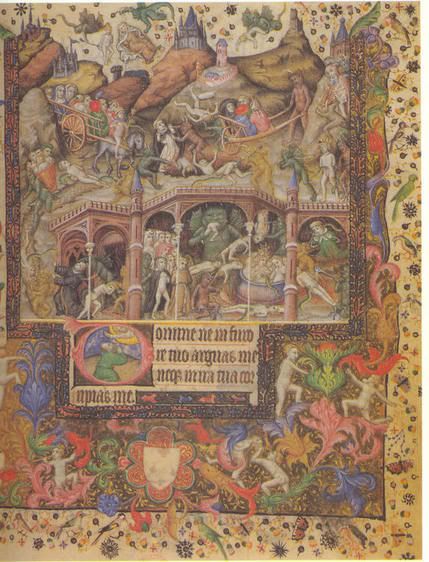
Or this detail from Fra Angelico's Last Judgment,
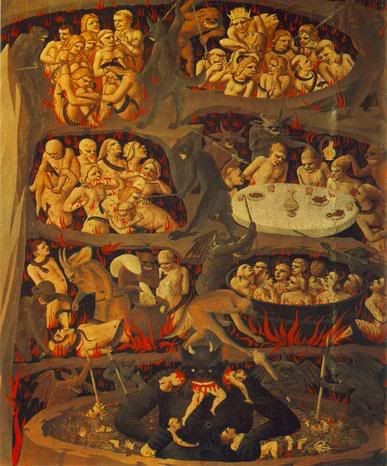
One wonders (not being a Ruskin buff) what she would have thought of Memling's Last Judgment here:

here,
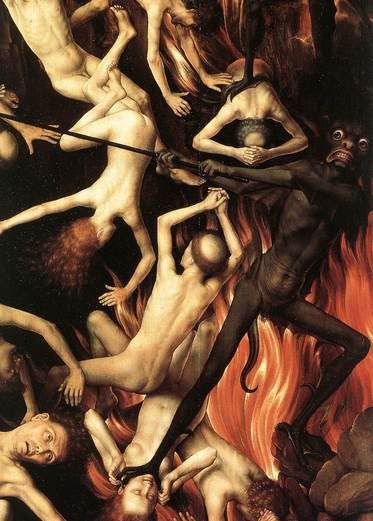
and here,

And that is just three details from Memling's great triptych, which to me, seems like something right out of an old Redemptorist Lenten mission sermon. To me, they are much more disturbing than Tintoretto's work.
This all reminds us that the Church used to be a lot more graphic about the unending agonies of Hell than it has been in the last 60 years of so. The British historian Paul Johnson in The Quest For God, spoke of the frightening Redemptorist sermons that his (Catholic) boarding school used to mandate every Lent.
To me Tintoretto's vision is very fuzzy and vague. But Fra Angelico's and Memling's are directly terrifying. The send shivers up the spine. They remind one that the wages of sin is death, and not just a quiet peaceful death, but unending torments.
And that, I think, is something John Q. Catholic in the pew every Sunday needs to hear more about, so that he can turn towards amendment of life with some urgency. It may be, as many said at the time, that there was too much fire and brimstone 70 years ago. But there has been almost none since before World War II.
Balance, I think, is the key. Sin, Death, the Devil, Hell, Judgment, yes, but also Mercy, the Blessed Mother, Grace, Adoration, and good works. Maybe 100 years ago, people only heard one side of the coin. Now they only hear the other. There has to be a happy medium.
Later, I recalled reading that the Victorian art critic John Ruskin had commented on it.
...the river of the wrath of God, roaring down into the gulf where the world has melted with its fervent heat, choked with the ruin of nations, and the limbs of its corpses tossed out of its whirling, like water-wheels. Bat-like, out of the holes and caverns and shadows of the earth, the bones gather, and the clay heaps heave, rattling and adhering into half-kneaded anatomies, that crawl, and startle, and struggle up among the putrid weeds, with clay clinging to their clotted hair, and their heavy eyes sealed by the earth-darkness."
I remember also that Ruskin's wife described the mural (at Venice's Madonna dell'Orto parish church)as emotionally disturbing.
Mrs. Ruskin must have been of a delicate psychological constitution to find Tintoretto's vision disturbing.
What she would have thought of this image of Hell from a French Book of Hours?:

Or this detail from Fra Angelico's Last Judgment,

One wonders (not being a Ruskin buff) what she would have thought of Memling's Last Judgment here:

here,

and here,

And that is just three details from Memling's great triptych, which to me, seems like something right out of an old Redemptorist Lenten mission sermon. To me, they are much more disturbing than Tintoretto's work.
This all reminds us that the Church used to be a lot more graphic about the unending agonies of Hell than it has been in the last 60 years of so. The British historian Paul Johnson in The Quest For God, spoke of the frightening Redemptorist sermons that his (Catholic) boarding school used to mandate every Lent.
To me Tintoretto's vision is very fuzzy and vague. But Fra Angelico's and Memling's are directly terrifying. The send shivers up the spine. They remind one that the wages of sin is death, and not just a quiet peaceful death, but unending torments.
And that, I think, is something John Q. Catholic in the pew every Sunday needs to hear more about, so that he can turn towards amendment of life with some urgency. It may be, as many said at the time, that there was too much fire and brimstone 70 years ago. But there has been almost none since before World War II.
Balance, I think, is the key. Sin, Death, the Devil, Hell, Judgment, yes, but also Mercy, the Blessed Mother, Grace, Adoration, and good works. Maybe 100 years ago, people only heard one side of the coin. Now they only hear the other. There has to be a happy medium.
With Regard To The Servants Of the Holy Family
Charo from St. Peter's Helpers contributes some helpful information regarding the question I poised regarding the Servants of the Holy Family, the Colorado traditional Latin Mass community affiliated with the Carmelite Monastery of the Sacred Hearts, and whether they are in union with Rome and recognized by legitimate authority.
So, the answer is that they are working on it.
I had raised the question because one of the first things that you see on the website of a traditionalist group sactioned by legitimate authority is that they are indeed in union with the Holy Father, recognize his authority, etc. And I did not see that here.
Just a suggestion, but if they want their approval in Rome to be granted that much quicker, statements of unity and obedience on the website an in other for-public-consumption resources might help. It is not a concession, just a statement of fact.
Pray for the approval, because this looks like a good Catholic group that deserves recognition.
We have been to see Bishop Chaput and he said that if we were in his diocese he would happily give us his approval, but we are not. We are in the diocese of Colorado Springs. We have been to see that bishop also, but he is probably waiting for our case with Rome to be settled before he gives his approval. Our community has sought approval from Rome directly and it will probably be some time before we hear from them again.
We do, however, have many friends who are bishops in union with Rome. They come from all over the world and they have been very encouraging to us over the years and have requested that we move to their dioceses. They even come here to visit us and give the Sacraments of Confirmation and Holy Orders.
I hope this answers your questions.
God bless.
Father Kevin D. Simons, S.S.F.
So, the answer is that they are working on it.
I had raised the question because one of the first things that you see on the website of a traditionalist group sactioned by legitimate authority is that they are indeed in union with the Holy Father, recognize his authority, etc. And I did not see that here.
Just a suggestion, but if they want their approval in Rome to be granted that much quicker, statements of unity and obedience on the website an in other for-public-consumption resources might help. It is not a concession, just a statement of fact.
Pray for the approval, because this looks like a good Catholic group that deserves recognition.
Judge Roberts Looks Like a Great Pick

President Bush's first Supreme Court nomination looks like a very good one. Judge Roberts clerked for Chief Justice Rehnquist (and justices pick clerks, for the most part, who are not just very bright, but reflect their ideology), was active, if I recall correctly, though I have not seen it mentioned, in the Federalist Society, and worked in the Reagan and Bush (41) Administrations.
Though he has not been a judge that long, he has plenty of Supreme Court experience. Even his critics concede that he has plenty of judicial temperment and fairness.
Looks like an original intent man, and a much firmer conservative than Justice O'Connor. Liberals will just have to get used to the fact that, if they lose the White House (and Republicans have controlled it since 1972 except for Carter and Clinton's combined 12 years) they lose control of the judiciary. It is just a series of unfortunate flukes that accounts for the fact that there are not now 7 hard-core conservatives on the Court.
And appointing a guy to this position dispels the unwholesome notion that certain genders, ethnic groups, or races "own" certain slots on the Court.
Update: I see that Judge Roberts is a practicing Catholic, which is a very good thing. But former Attorney General John Ashcroft would have been a perfectly acceptable choice, too, and he is some sort of Evangelical. Catholics do not need to be petted with a "one-of-ours" nomination (after all, Justices Scalia, Thomas, and Kennedy are also Catholic). As long as the nominee reflects our cultural views, as John Ashcroft would have, that would have been fine.
Tuesday, July 19, 2005
Traditional Feast of Saint Vincent de Paul
On the old calendar. On the reformed calendar, his feast is September 27th.
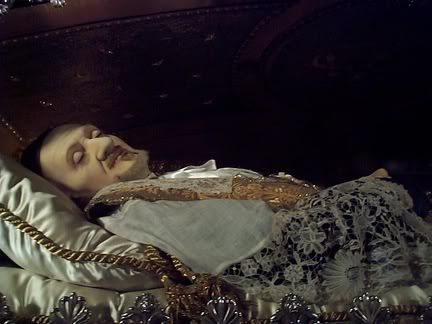
He is an incorruptible.

He is an incorruptible.
Supreme Court Announcement Tonight
President Bush is going to announce his pick to replace Justice Sandra Day O'Connor tonight.
Leaks are indicating that Judge Edith Clement of the 5th Circuit will be the nominee.
She is said to be conservative, but lacks the paper trail of Judge Edith Jones of the same circuit, who has been a conservative "all-star" pick for the high court for a decade, along with Judges Emilio Garza and J. Michael Luttig. So she is something of an unknown quantity.
And that is a bad thing. With regard to marriage, abortion and other life issues, unless a justice has strong views, we can assume that they will drift to the Kennedy, Souter, O'Connor position. The record of stealth candidacies is not a good one. Try to avoid a fight, and you end up with a liberal, or at best, a mushy moderate.
There is something here that rubs me the wrong way, this backing down from a fight. Bush ought to pick Jones, nail the colours to the mast, and let loose both broadsides continually against liberal judicial activism and in favor of original intent until the nomination is confirmed.
Judge Clement might be OK. That will remain to be seen.
This is troubling, though:
On the other hand, the pro-baby killing people are nervous, too:
For the first time, I saw Harvard Law School Professor Mary Ann Glendon's name on a short list. She would be the best pick of all, absolutely awesome, the sort of pick that would give Bush 75% of the Catholic vote if he were running again. But he isn't, and the leaks are saying she is not the one. In fact, Judge Clement does not seem to be at her chambers today, which indicates that she is enroute to Washington (or already there).
Update: Now there is big back-tracking on the Judge Clement leak. It may not be her. One news source I have seen has her personally vehemently denying it.
Judge Jones after all? Maybe Professor Glendon (don't we wish!)?
Leaks are indicating that Judge Edith Clement of the 5th Circuit will be the nominee.
She is said to be conservative, but lacks the paper trail of Judge Edith Jones of the same circuit, who has been a conservative "all-star" pick for the high court for a decade, along with Judges Emilio Garza and J. Michael Luttig. So she is something of an unknown quantity.
And that is a bad thing. With regard to marriage, abortion and other life issues, unless a justice has strong views, we can assume that they will drift to the Kennedy, Souter, O'Connor position. The record of stealth candidacies is not a good one. Try to avoid a fight, and you end up with a liberal, or at best, a mushy moderate.
There is something here that rubs me the wrong way, this backing down from a fight. Bush ought to pick Jones, nail the colours to the mast, and let loose both broadsides continually against liberal judicial activism and in favor of original intent until the nomination is confirmed.
Judge Clement might be OK. That will remain to be seen.
This is troubling, though:
The thought of Clement on the bench also has eased fears among abortion-rights advocates. She has stated that the Supreme Court, "has clearly held that the right to privacy guaranteed by the Constitution includes the right to have an abortion" and that "the law is settled in that regard."
On the other hand, the pro-baby killing people are nervous, too:
Still, Nancy Keenan, president of NARAL Pro-Choice America, said that Clement's record raises "seriously troubling" questions about her commitment to protecting personal freedom. "Unless she was able to put those concerns to rest in Senate hearings, pro-choice Americans would oppose her nomination," Keenan said.
For the first time, I saw Harvard Law School Professor Mary Ann Glendon's name on a short list. She would be the best pick of all, absolutely awesome, the sort of pick that would give Bush 75% of the Catholic vote if he were running again. But he isn't, and the leaks are saying she is not the one. In fact, Judge Clement does not seem to be at her chambers today, which indicates that she is enroute to Washington (or already there).
Update: Now there is big back-tracking on the Judge Clement leak. It may not be her. One news source I have seen has her personally vehemently denying it.
Judge Jones after all? Maybe Professor Glendon (don't we wish!)?
Thomas Merton, OCSO On Bells
From Thoughts In Solitude, 1956

There is some good stuff in Merton, but one must be careful in using him.
Update: On the use of a bell during Mass, read this from Catholic Exchange.
Bells are meant to remind us that God alone is good, that we belong to Him, and that we are not living for this world.
They break in upon our cares in order to remind us that all things pass away and that our preoccupations are not important.
They speak to us of our freedom, which responsibilites and transcient cares make us forget.
They are the voice of our alliance with the God of Heaven.
They tell us that we are His true temple. They call us to peace with Him within ourselves.
The Gospel of Mary and Martha is read at the end of the Blessing of a Church Bell in order to remind us of all these things.
The bells say: business does not matter. Rest in God and rejoice, for this world is only the figure and the promise of a world to come, and only those who are detached from transcient things can possess the substance of an eternal promise.
The bells say: we have spoken for centuries from the towers of great Churches. We have spoken to the saints your fathers, in their land. We called them, as we call you, to sanctity. What is the word with which we called them?
We did not merely say, "Be good, come to Church." We did not merely say, "Keep the commandments," but above all, "Christ is risen, Christ is risen!" And we said: "Come with us. God is good, salvation is not hard, His love has made it easy!" And this, our message, has always been for everyone, for those who came and for those who did not come, for our song is perfect as the Father in heaven is perfect and we pour our charity out upon all.
There is some good stuff in Merton, but one must be careful in using him.
Update: On the use of a bell during Mass, read this from Catholic Exchange.
Site Feed
Recta Ratio has it now, at the suggestion of a reader.
Bishop Olmstead:
Don't shop on Sundays, keep them as a holy sabbath.
Not exactly a new Catholic position. The Archdiocese was one of the forces that kept the Massachusetts Blue Laws in effect so long, long after the Puritans who wrote them were mouldering in neglected graves.
Not exactly a new Catholic position. The Archdiocese was one of the forces that kept the Massachusetts Blue Laws in effect so long, long after the Puritans who wrote them were mouldering in neglected graves.
Not From Vasari
But an image I have always liked.

A choir of angels by Luca della Robbia.
It appears on the dust jacket of the edition of Father Omer Englebert's The Lives of the Saints that I use.

A choir of angels by Luca della Robbia.
It appears on the dust jacket of the edition of Father Omer Englebert's The Lives of the Saints that I use.
New Age Penetrates Catholic Thought
From Zenit.
One of the features of "New Age" thought is the self-divinization, placing the self at the center of creation. Tell me, doesn't the emphasis on the congregation/community in the Novus Ordo Mass feed on this? Take a look at some of the songs of Haugen and Haas, and tell me they are not putting the worshippers (as a community or as individuals) ahead of the sacrifice of the Mass.
One of the features of "New Age" thought is the self-divinization, placing the self at the center of creation. Tell me, doesn't the emphasis on the congregation/community in the Novus Ordo Mass feed on this? Take a look at some of the songs of Haugen and Haas, and tell me they are not putting the worshippers (as a community or as individuals) ahead of the sacrifice of the Mass.
Heresy?
At Ignatius Insight Kenneth Whitehead offers a good, if brief, guide to various historic heresies.
While there are few today who would declare themselves Arians, or Pelagians, or Donatists, the same ideas have a way of taking on new wrappings, getting a few new accessories, and beguiling new generations of imperfectly formed minds.
And since:
A) The Church no longer has an active Inquisition, and
B) People claim they are Catholics when they are, in fact, excommunicated (see the Danube Seven), and
C) Even the penalty of excommunication means little when the Church is reluctant to say (and punishes those who do say) that there is no salvation outside the Roman Catholic Church (and those rites in communion with Rome).
Heresy will grow unchecked. All the Church can do is declare doctrines or practices heretical, and declare someone outside the Church. And that is it as far as sanctions go.
While there are few today who would declare themselves Arians, or Pelagians, or Donatists, the same ideas have a way of taking on new wrappings, getting a few new accessories, and beguiling new generations of imperfectly formed minds.
And since:
A) The Church no longer has an active Inquisition, and
B) People claim they are Catholics when they are, in fact, excommunicated (see the Danube Seven), and
C) Even the penalty of excommunication means little when the Church is reluctant to say (and punishes those who do say) that there is no salvation outside the Roman Catholic Church (and those rites in communion with Rome).
Heresy will grow unchecked. All the Church can do is declare doctrines or practices heretical, and declare someone outside the Church. And that is it as far as sanctions go.
New Link Worth Checking Out
OK sacred art fans, I've found something really worthwhile.
Vasari's Lives of the Most Eminent Painters, Sculptors, and Architects is loaded with sacred art images from Michaelangelo, Donatello, Fra Angelico, Giotto, della Robbia, Fra Lippi, and numerous others. Plus there are short biographical sketches.
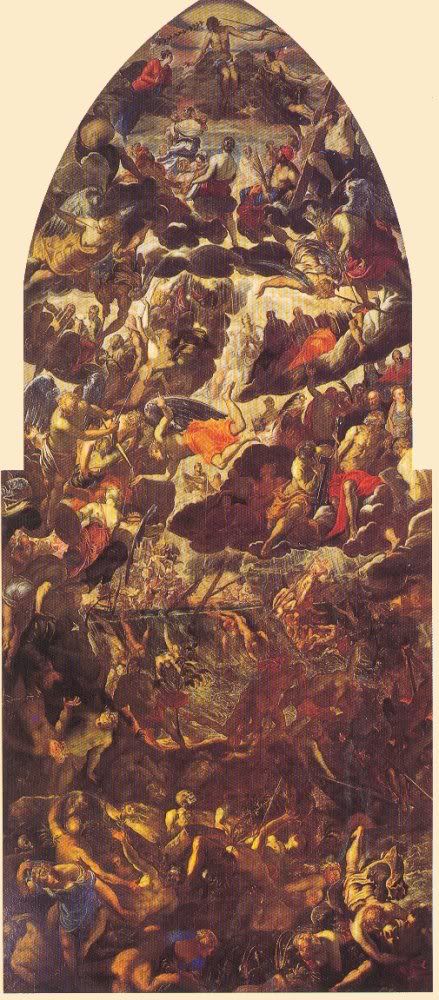
Here, for instance, is Tintoretto'sLast Judgment, a very difficult image to find on line (or in books, for that matter).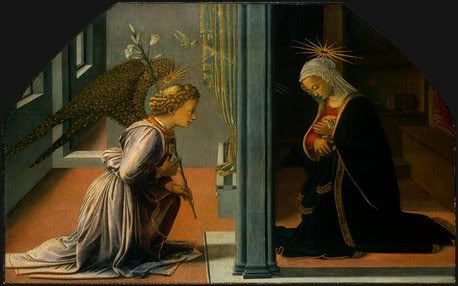
An Annunciation by Fra Lippi
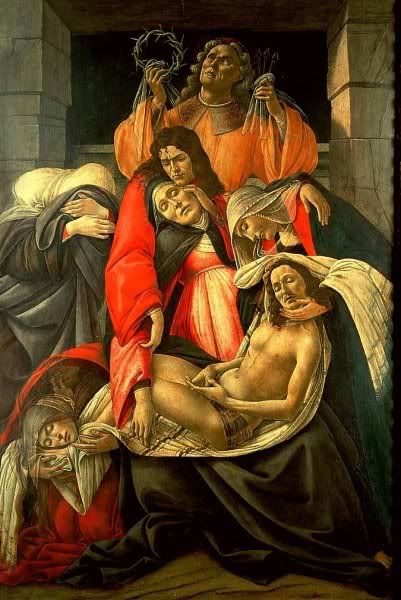
A Pieta by Botticelli
Stop me before I just keep posting image after image!
Vasari's Lives of the Most Eminent Painters, Sculptors, and Architects is loaded with sacred art images from Michaelangelo, Donatello, Fra Angelico, Giotto, della Robbia, Fra Lippi, and numerous others. Plus there are short biographical sketches.

Here, for instance, is Tintoretto'sLast Judgment, a very difficult image to find on line (or in books, for that matter).

An Annunciation by Fra Lippi

A Pieta by Botticelli
Stop me before I just keep posting image after image!
Requiescat In Pace
Two rather ambiguously conservative figures have passed from the scene. Ted Heath, sort of the Gerald Ford of the Tory Party, who had to decrease so that Margaret Thatcher could increase (as Ford decreased, so that Reagan could increase) died at the age of 89.
General William Westmoreland, who commanded US forces in Vietnam, also died at the age of 91.
Both were patriotic, and vaguely conservative, in the sense that they did not favor the new age left. But neither had much of what you would call vision or strategic genius. Neither had the will to win at all costs. Neither shared the modern conservative vision of overwhelming military strength (in the case of Westmoreland) or supply-side economics tied with cultural conservatism and strong patriotic nationalism (Heath).
Yet they were both good, if weak, men. Requiescat in pace.
General William Westmoreland, who commanded US forces in Vietnam, also died at the age of 91.
Both were patriotic, and vaguely conservative, in the sense that they did not favor the new age left. But neither had much of what you would call vision or strategic genius. Neither had the will to win at all costs. Neither shared the modern conservative vision of overwhelming military strength (in the case of Westmoreland) or supply-side economics tied with cultural conservatism and strong patriotic nationalism (Heath).
Yet they were both good, if weak, men. Requiescat in pace.
Monday, July 18, 2005
Sounds Like the Holy Father Is Having A Good Time
As reported by St. Peter's Helpers.
A mountain vacation is just the thing before another round of excommunications for women who insist they are now Catholic priestesses, banning homosexuals from the seminaries, new highly and aggressivley orthodox appointments to bishoprics the world over, and getting serious about the Euchariast and those who abuse the Sacrament.
Toss in a generalized indult for the traditional Latin Mass, and a smackdown of bad liturgical music, more worthy saints raised to the altars of the Church, and you have a real agenda there, certainly one I can get behind.
God bless our Holy Father Pope Benedict XVI, and long may he reign!
A mountain vacation is just the thing before another round of excommunications for women who insist they are now Catholic priestesses, banning homosexuals from the seminaries, new highly and aggressivley orthodox appointments to bishoprics the world over, and getting serious about the Euchariast and those who abuse the Sacrament.
Toss in a generalized indult for the traditional Latin Mass, and a smackdown of bad liturgical music, more worthy saints raised to the altars of the Church, and you have a real agenda there, certainly one I can get behind.
God bless our Holy Father Pope Benedict XVI, and long may he reign!
From a Reader Re: Father Brainerd
Mr. Fitzpatrick,
I was looking at your blog and I noticed your remarks about Fr.
Brainerd and Cardinal McCarrick. I just wanted to let you know that as a parishoner
of the Church, Fr. Brainerd is totally orthodox, and in fact, would not have
communicated Kerry and Kennedy if it were left up to him. This is the
Cardinal's standing instruction--that confrontations with ProAbort
politicians "not occur at the altar rail." In fact it is Fr. Brainerd's orthodoxy
which probably got him retired.
I find the Cardinal's "not at the altar rail" comment hysterical. Are there any altar rails left in the churches under his control? Has he done anything to preserve them?
Latest Buzz On the Next Supreme Court Appointment
Rumors are rife that the nomination will come this week, rather than at the end of the month as previously thought, and it is likely to be a woman.
Of the female contenders, Judge Edith Jones would be the best.
Of the female contenders, Judge Edith Jones would be the best.
600 Year-Old Papal Seals Discovered
"I'm A Hustler! I'm a Warrior!"
You're a pathetic loon.
I don't think he'll be desecrating any more statues of the Holy Family and its relatives, since he will have a lot of "splaining" to do over shooting two cops, whose recovery I am sure we all pray for.
I don't think he'll be desecrating any more statues of the Holy Family and its relatives, since he will have a lot of "splaining" to do over shooting two cops, whose recovery I am sure we all pray for.
Pope Benedict XVI...
Fashion plate.
Nice accesories go with the job. With all those headaches, there have to be some perks.
Nice accesories go with the job. With all those headaches, there have to be some perks.
Bishop Bruskewitz On the Supreme Court Vacancy
Dom has it.
He puts the issue just right. Catholics are not constrained to be against capital punishment in all cases. They are constrained to be against abortion. The main difference lies in guilt versus innocence. A society that cannot distinguish the guilty from the innocent with a fair (90% or better) degree of certainty is an unjust one. We are not that. We do get it right more than 90% of the time. Though there have been troubling lapses that advances in technology are helping to prevent in the future.
For pro-abortion liberals, babies are deserving of death, if it is more convenient for the mother.
For pro-death penalty conservatives, convicted murderers and traitors are deserving of death, in the self-preservation interests of society.
Life is not the same. There is innocent life (and you cannot be more innocent than an unborn baby) and there is guilty life (and it is hard to see where anyone convicted of murder would be more likely to be guilty in fact than in the US today).
For the rest of what a Supreme Court justice does, Bishop Bruskewitz has it just right: interpret the Constitution as written and intended by the Founding Fathers. Don't legislate from the bench. The courts are not the place to enact policy preferences that have not won at the ballot box.
He puts the issue just right. Catholics are not constrained to be against capital punishment in all cases. They are constrained to be against abortion. The main difference lies in guilt versus innocence. A society that cannot distinguish the guilty from the innocent with a fair (90% or better) degree of certainty is an unjust one. We are not that. We do get it right more than 90% of the time. Though there have been troubling lapses that advances in technology are helping to prevent in the future.
For pro-abortion liberals, babies are deserving of death, if it is more convenient for the mother.
For pro-death penalty conservatives, convicted murderers and traitors are deserving of death, in the self-preservation interests of society.
Life is not the same. There is innocent life (and you cannot be more innocent than an unborn baby) and there is guilty life (and it is hard to see where anyone convicted of murder would be more likely to be guilty in fact than in the US today).
For the rest of what a Supreme Court justice does, Bishop Bruskewitz has it just right: interpret the Constitution as written and intended by the Founding Fathers. Don't legislate from the bench. The courts are not the place to enact policy preferences that have not won at the ballot box.
Sunday, July 17, 2005
Traditional Carmelite Alert!!!
While reading through other blogs to see what I missed while taking a day off for my birthday (not too many earth-shattering developments, thank heavens) I found this wonderful website for The Carmelite Monastery of the Sacred Hearts, a traditional Discalced Carmelite community in Colorado.
They have the traditional Latin Mass said there.
There is also a great image gallery.

They support themselves through the sale of various devotional items and sacramentals.
There is also a community for men affiliated with these sisters, The Servants of the Holy Family.

They also support themselves via the sale of sacramentals, but also by selling great gourmet food, including an item very near to my heart, that touches many associations, Elizabethan Cannonball Mustard With Garlic.
I found this via St. Peter's Helpers.
Two new items for the links, seemingly. But I did have a question about whether these two communities are in union with Rome. The fact that the Servants have to have bishops and retired bishops from all over the world come to ordain their priests does not sound good. I mean, there is Archbishop Chaput, no enemy of the traditional Latin Mass, right there in Denver.
They have the traditional Latin Mass said there.
There is also a great image gallery.

They support themselves through the sale of various devotional items and sacramentals.
There is also a community for men affiliated with these sisters, The Servants of the Holy Family.

They also support themselves via the sale of sacramentals, but also by selling great gourmet food, including an item very near to my heart, that touches many associations, Elizabethan Cannonball Mustard With Garlic.
I found this via St. Peter's Helpers.
Two new items for the links, seemingly. But I did have a question about whether these two communities are in union with Rome. The fact that the Servants have to have bishops and retired bishops from all over the world come to ordain their priests does not sound good. I mean, there is Archbishop Chaput, no enemy of the traditional Latin Mass, right there in Denver.
House of Prayer Turned Into Den of Absurdity
There is nothing reverent, respectful, fitting, proper, or even remotely suitable in the items on display at Notre Dame de la Chappelle in Brussels, as documented by Catholic Church Conservation.
It is astonishing that any pastor or bishop could ever sanction such a display in any church building. What are these Euro-Catholics smoking?
Recall what our new Holy Father wrote in the reflections for the Stations of the Cross on Good Friday in Rome this year: that the Church is full of filth that needs to be cleansed. Here is a prime example of filth actually filling a church.
If I wasn't already thoroughly depressed, this one alone would be a downer.
It is astonishing that any pastor or bishop could ever sanction such a display in any church building. What are these Euro-Catholics smoking?
Recall what our new Holy Father wrote in the reflections for the Stations of the Cross on Good Friday in Rome this year: that the Church is full of filth that needs to be cleansed. Here is a prime example of filth actually filling a church.
If I wasn't already thoroughly depressed, this one alone would be a downer.
Another 43 Years In This Vale of Tears?
According to this test (that I found via But I Digress) that is what is in store for me.
Sigh.
Tedium vitae ain't in it. Woe is me, O Lord, for my abode has been prolonged. Woe is me O Lord, for that I have sinned too much in my life.
Well, let's hope the next 43 will be better than the previous 41. Now I feel truly middle-aged.
Sigh.
Tedium vitae ain't in it. Woe is me, O Lord, for my abode has been prolonged. Woe is me O Lord, for that I have sinned too much in my life.
Well, let's hope the next 43 will be better than the previous 41. Now I feel truly middle-aged.
Carmelite Martyrs of Compiegne

See this excellent posting from the archives of Inn At the End of the World.
I had this to say about these martyrs last year.




